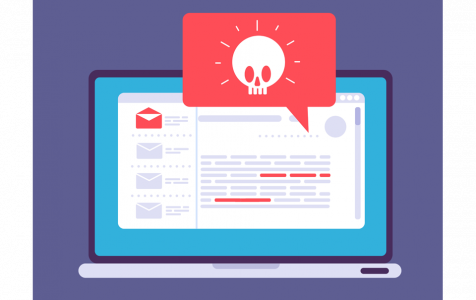Ever heard of the warning not to entertain spam emails? In as much as you cannot control the emails you always receive; you cannot stop them, too. Fortunately, you do get some sort of control over the situation. Spam emails always go to their own folder. This way, your rope and chances of fixing email contents are extended.
The Bill of lading email virus developers realized this error and took the gap. This is one clever and well-designed malware. Sneaking behind a big brand has proven helpful for this virus. Under this scheme, anyone is a target. And those who usually overlook emails or don’t take the time to filter emails might find themselves as victims.
About the Bill of Lading Email Virus?
The Bill of lading email virus is a malware entity that is carried in email. It is an attachment packaged to resemble a legit Bill of Lading. The supposed bill comes from one of the biggest international shipping companies, Maersk. And because Maersk is quite known, it’s rare for recipients to overthink this email.
Why is the Bill of lading email virus successful? In most cases, it’s easy to believe that an international shipping company makes contact when there are delays or similar problems. And that’s the loophole. The message sent claims to be coming from Maersk having advised ‘the shipping customer’ to make contact with you, ‘the recipient’.
The email states that there is an issue or a tracking detail. In order to access whatever the email contains, the recipient must click on an attachment or external link. This link contains malware. Clicking the file or link instantly installs the Bill of lading email malware onto the system.
Check the sample email sent to victims:
Subject: Bill of Lading
Dear Consignee,
Please find attached your Bill of Lading for the current shipment heading to your port.
Shipping customer advised us to contact your email [removed] as the
consignee/receiver of the goods in transit.
ETA of cargo also included in the attached file.
Thank you for your support.
Best regards,
Maersk Line
The Integrated Container Logistics & Supply Chain Services
What to do About the Bill of Lading Email Virus?
To be safe, don’t be quick to attend to spam emails. Diligently sort through them and take your time while at it. This trick works because the creators send it with the hope that recipients will see Maersk in the letter and think it’s legit. Secondly, others love receiving gifts and will open because of the promise of a mysterious parcel being shipped.
- First, verify all official Maersk email addresses. Instead of just jumping headfirst and believing an email in the Spam folder comes from who it claims, research it. Tracing back using an email address is the best way of determining the truth of the matter.
- Do not open any links or attachments. In case you do open Spam emails and go through them, don’t accept the invitation to click. Do not even follow the link or attachment.
- Look out for any email claiming to be a Bill of Lading from an international shipping company. At times, this malware might come claiming to be from another company. If you didn’t order anything online, read through and check those close to you. And if you can’t connect the parcel to anyone you know, then don’t accept anything in the email.
What Does the Bill of Lading Email Virus Do?
This malware falls under the Trojan type. It can also be classified as a password-stealer, most popularly identified as a banking malware entity. Once successfully installed, this Trojan will infiltrate your system without your knowledge. Initially, it’s not possible to tell when a computer has been infiltrated with the Bill of lading email virus.
Once done installing, the malware sets to work. And it targets all personal financial details. Information such as banking and passwords are collected. This Trojan then starts attacking when the victim starts getting malicious online adverts and noticing software cracks.
How to Get Rid of the Bill of Lading Email Virus?
Understanding how the Bill of lading email virus infect my computer will also help you know how to remove it. Moving on, get and invest in reliable, proven anti-malware removal tools to help deal with the Bill of lading email virus once and for all. With trusted, useful tools, there is nothing that viruses can do.
You can also try getting rid of the malware manually. From your Computer, do the following:
- Access Settings.
- Open the Control Panel, then search on and click Add or Remove Program.
- Locate any programs and apps installed just before you noticed the Bill of lading email virus.
- Remove these as they might also be associated.
Conclusion
The Bill of lading email virus can be quite stubborn and needs you to remove it time and over. Using a generic snit-malware removal tool is not always the answer. This is one clever malware. And it keeps several layered files hidden on the computer. If you’re not careful, you risk being overtaken by the virus time and over. Learn and accept this virus’ creepy nature and that it can reinfect your computer. Don’t waste time on trial and errors. Get a strong anti-malware and be done with the Bill of lading email virus for good.
